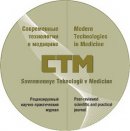
Subthreshold Microimpulse Infrared Trabeculoplasty with a Wide Spot in Treatment of the Primary Open Angle Glaucoma
Aim of investigation is elaboration of a subthreshold microimpulse infrared trabeculoplasty with a wide spot method, a study of a hypotensive effectiveness and detection of its place in a complex treatment of the primary open angle glaucoma different types and stages.
Materials and Methods. A method is made to 82 patients (113 eyes) with the primary open angle glaucoma of different stages at the ophthalmologic laser IQ 810 of the ″IRIDEX″ (USA) firm. The initial level of intraocular pressure fluctuated from 19 to 32 mm of the mercury column (25.6 mm of the mercury column in the average). The patients were examined prior to operation, in a proximate and remote postoperative period (in 1h, 1 day, 1 week, 1, 3, 6 and 9 months).
Results. A decrease of intraocular pressure up to 19 mm of the mercury column in the average, i.e. by 25.8% of initial one, was detected in all the eyes in a day after a subthreshold microimpulse infrared trabeculoplasty. A level of ophthalmotonus was 21.1; 21.2; 20.4 and 19.4 mm of the mercury column in the average, respectively, in 1, 3, 6 and 9 months, i.e. it was decreased by 18; 17.2; 20.3 and 24.2% of initial one. The electronic and digital tonometry data also testifies to improvement of a fluid outflow through a helmet canal (of the C value) by 0.085% in the average for investigating period.
Conclusion. A subthreshold microimpulse infrared trabeculoplasty with a wide spot is effective and safe method of treatment, especially at the stages of the primary open angle glaucoma.










